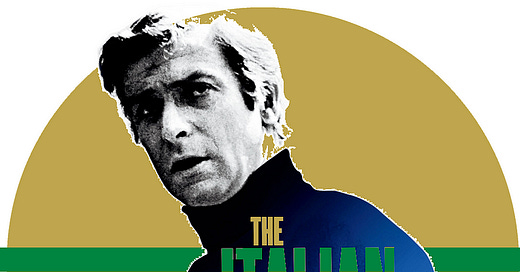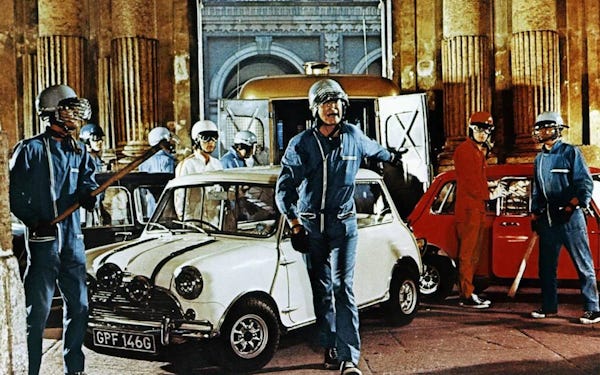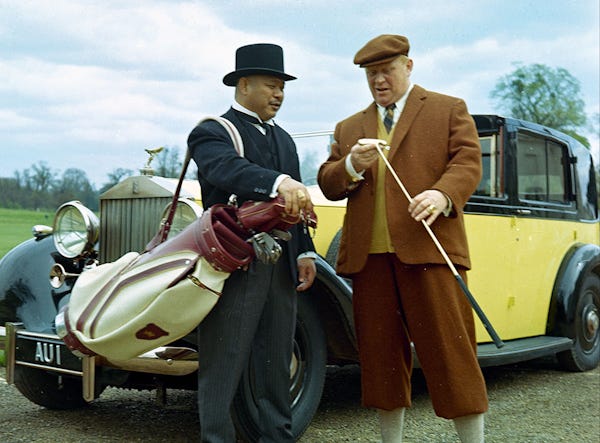Do you enjoy puzzles?
Disruptive innovation is all puzzle solving. Epic puzzles that can span cities, continents, days, decades or centuries. Or small, personal puzzles that could change your life. Devious plans, to get you what you want. For example, consider the movie The Italian Job starring Michael Caine.
Consider this puzzle. A gold heist is to be performed in the middle of an Italian city. A large quantity of heavy and very stolen gold must be quickly transported from a crowded city centre to the outskirts, whilst evading law enforcement.
How many solutions can you think of?
To transport this cargo through this environment will demand a very special vehicle. This vehicle must fit through narrow streets. This vehicle must also prevent us from being caught by the police. Finally, this vehicle must be able to transport a great weight of gold.
These desires may be offered by a vehicle that is small enough to fit through the streets, strong enough to carry all of the gold, and fast enough to evade the police. A fast, powerful, but small solution is required, and the British Leyland Mini Cooper that Cockney criminal Charlie Croker selects does not offer all of these properties.
If there is no vehicle small enough and fast enough and strong enough to carry the great mass of gold we have stolen we must find an alternative to make our escape. How did Charlie Croker arrive at the Mini as a suitable vehicle for the job? Here we dip into the philosopher’s toolkit.
We must resolve any logical contradictions that arise between solutions that offer fast and small and strong if we are to realise all of the desires that we seek.
We must escape from the police,
We must traverse narrow streets,
We must carry a heavy load.
Consider only one pair of options. If a small vehicle is not fast enough to evade the police, or alternatively a fast vehicle is too large to fit through the narrow streets of Turin we must choose one of these features and impose a contradiction upon the other.
We might choose a large fast vehicle. Now this fast vehicle must somehow traverse the narrow streets but not traverse the narrow streets.
How could we resolve this paradox?
Perhaps we could choose another dimension to resolve our problem and find a very fast vehicle that can fly above those streets. A helicopter might suffice?
We might pursue the alternative. We might instead choose a small vehicle that can fit through those streets, and yet is not fast enough to evade the police.
Now our solution must evade the police, but not evade the police. Another paradox to solve.
Perhaps a colour change might offer some camouflage. To change our appearance might make us seem like an unlikely vehicle in which to make a getaway with stolen gold. What if we adopted the appearance of an ice cream van? Just sitting there, not really escaping at all. Surrounded by police, but overlooked as a suspect.
Consider another pair of options. Our vehicle must traverse the narrow streets, but also carry all of the gold. We again choose one of these features and impose a contradiction upon the other. We might choose the strongest means to lift our gold that we can find. Now this immensely strong vehicle must traverse the narrow streets but not traverse the narrow streets.
Another paradox.
We could engage in a periodic action to lift the gold out of those narrow streets with a series of overlapping construction cranes that reach over the city? A strong vehicle that cannot traverse the city streets, and yet can reach right into them.
Instead, we might flip the choice and select a small vehicle. Now the vehicle must carry all of the gold but not carry all of the gold.
How can a vehicle that is too small to carry all of the gold carry all of the gold? We can resolve this contradiction through segmentation and break our load into smaller, lighter pieces.
The smallest of vehicles might be a single person. Why not avoid those streets altogether by recognizing that the buildings are porous materials? Select another dimension and don’t travel down the road at all, but across. Avoid the street altogether and carry all the gold through the buildings by hand. Brick by brick.
If our vehicle must both evade the police but also carry all of the gold we once more must choose one of these features and impose a contradiction upon the other.
We select a big strong vehicle, and now we must evade the police, but not evade the police.
In what way can a strong, heavy vehicle remain ahead of the police? We could merge the gold and the vehicle, to camouflage the gold once more. Make the gold a part of the vehicle to hide it from the police, as Goldfinger did. Then our very strong and extremely heavy vehicle made from gold might drive sedately through the streets, remaining one step ahead of the police as we crawl along.
We might instead, choose a very fast vehicle, and now the vehicle must carry all of the gold, but not carry all of the gold.
We can resolve this contradiction again through segmentation, by breaking our load into smaller, lighter pieces. If we then copy a fast vehicle, we can distribute this load between multiple fast vehicles and each will not carry all of the gold, and yet all of the gold is carried. This is the solution Charlie Croker selects, and now we make our escape.
By considering utter paradox we can solve our problem in multiple ways, and select the best. We encounter three desires. We discover no solution fast enough, small enough, nor strong enough to transport our loot, and so our practical solution presents a contradiction. We create a series of intractable paradoxes, and then fight our way out.
In fighting our way out of these paradoxes, we discover the plot for several more movies.
Consensus, My Nemesis.
I’m the type to say exactly what I shouldn’t. If there’s a taboo to break, I’ll get to work. In unpopular opinions I’ll plant my flag, to defend until I’m bored. The room will stop and stare. (Which is perhaps the point.) He’s gone quite mad, they’ll think, but they won’t stop there.













